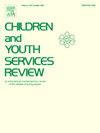家庭混乱与青少年心理健康的关系:亲子关系和青少年心理弹性的作用
IF 2.4
2区 社会学
Q1 FAMILY STUDIES
引用次数: 0
摘要
人们越来越担心生活在混乱的家庭对青少年发展的有害影响。虽然家庭混乱(即过度噪音、混乱、缺乏常规)被广泛认为是影响青少年心理健康的一个重要因素,但其潜在机制仍不清楚,特别是在综合考虑积极指标(如繁荣)和消极指标(如抑郁症状)时。本研究旨在从并行和纵向两方面考察父母青少年关系的中介作用和青少年心理弹性的调节作用,探讨家庭混乱与青少年心理健康的关系。我们使用了603名青少年的两波样本(时间1的年龄= 13.52±0.35岁;50.7%的女孩)来自中国的双亲家庭,数据每隔一年收集一次。研究发现,家庭混乱通过不同的途径与青少年抑郁症状和繁荣之间存在关联:(1)在并发分析中,母亲-青少年冲突和父亲-青少年亲密关系介导了家庭混乱与抑郁症状之间的并发关联,而母亲-青少年和父亲-青少年亲密关系介导了家庭混乱与繁荣之间的并发关联;(2)在纵向分析中,母亲-青少年冲突在家庭混乱与抑郁症状和繁荣之间的关联中起中介作用;(3)青少年心理弹性调节了母亲-青少年亲密关系与抑郁症状的同步关联。这些发现强调了减少家庭混乱的重要性,并强调了在家庭环境中进行干预的潜在目标。本文章由计算机程序翻译,如有差异,请以英文原文为准。
Associations between household chaos and mental health in adolescents: The role of parent-adolescent relationship and adolescent resilience
There is a growing concern about the detrimental impact of living in a chaotic home on adolescent development. Although household chaos (i.e., excessive noise, disorganization, lack of routines) is widely recognized as an important factor affecting adolescent mental health, the underlying mechanisms remain unclear, particularly when examining positive (e.g., flourishing) and negative indicators (e.g., depressive symptoms) together. Our study aims to provide insights into the relationship between household chaos and adolescent mental health by examining the mediating effects of father/mother-adolescent relationship and the moderating effect of adolescent resilience, from both concurrent and longitudinal perspective. We utilized a two-wave sample of 603 adolescents (Mage at Time 1 = 13.52 ± 0.35 years; 50.7 % girls) from two-parent households in China, with data collected at a one-year interval. We found that household chaos was associated with adolescent depressive symptoms and flourishing through distinct pathways: (1) In concurrent analyses, mother-adolescent conflict and father-adolescent intimacy mediated the concurrent association between household chaos and depressive symptoms, while both mother-adolescent and father-adolescent intimacy mediated the association between household chaos and flourishing; (2) In longitudinal analyses, mother-adolescent conflict mediated the associations between household chaos and both depressive symptoms and flourishing; and (3) Adolescent resilience moderated the concurrent association between mother-adolescent intimacy and depressive symptoms. These findings emphasize the importance of reducing household chaos and highlighting potential targets in interventions within family settings.
求助全文
通过发布文献求助,成功后即可免费获取论文全文。
去求助
来源期刊

Children and Youth Services Review
Multiple-
CiteScore
6.30
自引率
6.10%
发文量
303
期刊介绍:
Children and Youth Services Review is an interdisciplinary forum for critical scholarship regarding service programs for children and youth. The journal will publish full-length articles, current research and policy notes, and book reviews.
 求助内容:
求助内容: 应助结果提醒方式:
应助结果提醒方式:


